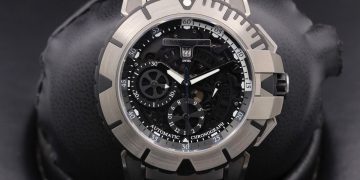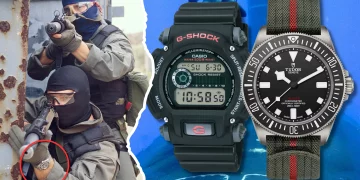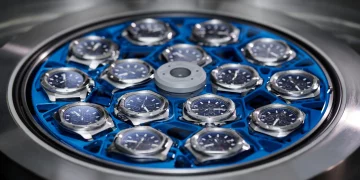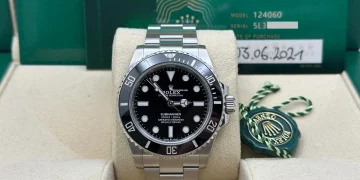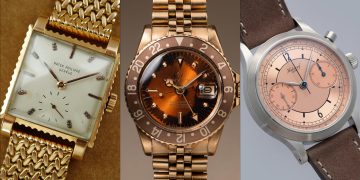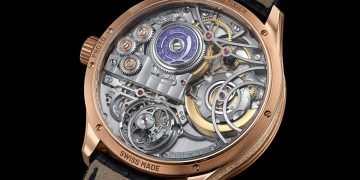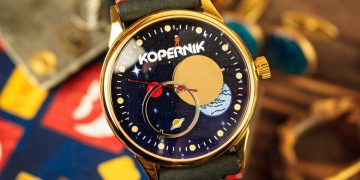The Hidden Chapter of Space History: When Longines Was Supposed to Go to the Moon
The Omega Speedmaster, known to collectors and enthusiasts as the “Moonwatch,” is one of the most iconic timepieces in horological history. Immortalized by its association with the Apollo 11 mission in 1969, the Speedmaster is forever tied to Neil Armstrong, Buzz Aldrin, and that singular moment when humankind set foot on the lunar surface. For decades, Omega has masterfully promoted its association with NASA, wrapping the Speedmaster in a mythos of precision, courage, and exploration. But declassified documents and emerging archival evidence suggest that the Moonwatch’s legacy may rest on a bureaucratic misstep rather than meticulous Swiss engineering alone. In fact, NASA’s original timepiece selection for the Apollo program was not Omega at all—it was Longines.
This revelation has rippled through watchmaking circles and space history forums alike, sparking new debates and breathing fresh intrigue into vintage watch collecting. The notion that Omega’s Moonwatch status was, at least partially, the product of a logistical error—and later, an unmatched PR campaign—challenges long-held assumptions about the timepiece’s celestial status.
The Declassified Memos: Longines’ Lost Lunar Moment
In 2019, a Freedom of Information Act (FOIA) request uncovered a set of internal NASA memos from 1964 and 1965, many of which had been forgotten in offsite storage for decades. Among the documents was an early draft of a procurement recommendation for the Apollo manned missions. The memo specified “chronographs from Longines-Wittnauer” as the preferred candidate for extravehicular timekeeping. The recommendation came after a series of bench tests performed under the direction of NASA engineer James Ragan, tasked with sourcing robust wristwatches for extreme space environments.
At that time, NASA had received chronographs from several Swiss manufacturers: Rolex, Omega, Longines, and Hamilton. In the initial rounds of testing, Longines’ 235T chronograph performed well, showcasing resistance to temperature variation and solid performance under decompression and vibration stress. Early engineers noted its readability, resilience, and build quality. Based on these attributes—and perhaps due to existing military contracts—Longines was shortlisted.
However, something changed in the process between initial recommendation and final selection. A corrected memo dated only a month later scratched Longines from the approved list and inserted Omega. The reasoning remains partially redacted in some documents, but anecdotal accounts suggest that a shipment mix-up, delays in communication, and inconsistencies in Longines’ packaging during the formal test phase led to NASA rerunning evaluations with a full set of Omegas and Rolexes only. With Longines out of the pool due to timing and logistics—not technical inferiority—the Omega Speedmaster Professional ultimately passed all the surviving tests and was approved as “flight qualified for all manned space missions.”
In other words, it wasn’t necessarily that Omega was the best. It may have simply been the most available, most consistent, and most responsive brand in that chaotic selection window.
From Oversight to Orbit: Omega’s Masterclass in Historical Rebranding
If Omega’s selection by NASA wasn’t originally guaranteed, then what followed must be seen as one of the greatest branding coups in watchmaking history. Omega immediately embraced the NASA endorsement with unparalleled fervor. By the time Apollo 11 launched, Omega had supplied Speedmasters to astronauts since Gemini IV. The company had learned to capitalize on every PR opportunity, placing watch ads in international newspapers that tied the Speedmaster to the frontier of human achievement.
After Buzz Aldrin wore his Speedmaster on the lunar surface—Neil Armstrong left his onboard as backup due to a malfunctioning timing system—Omega officially renamed the line “Moonwatch” and built an entire marketing universe around its NASA affiliation. They leaned heavily into storytelling, commissioning commemorative editions, engraving lunar mission casebacks, and creating visuals that positioned the Speedmaster as integral to space exploration. By the 1970s, collectors and customers alike believed the Moonwatch was predestined for lunar glory.
Longines, by contrast, never fully contested the outcome. Whether due to internal conservatism or Swiss watch diplomacy, they refrained from issuing public statements or challenging Omega’s dominance in space heritage. For many years, their involvement in early NASA testing remained an obscure footnote.
But the historical facts—now publicly documented—have reopened the conversation. Omega may have gone to the Moon, but the path there was paved with logistical redirection, not celestial inevitability.
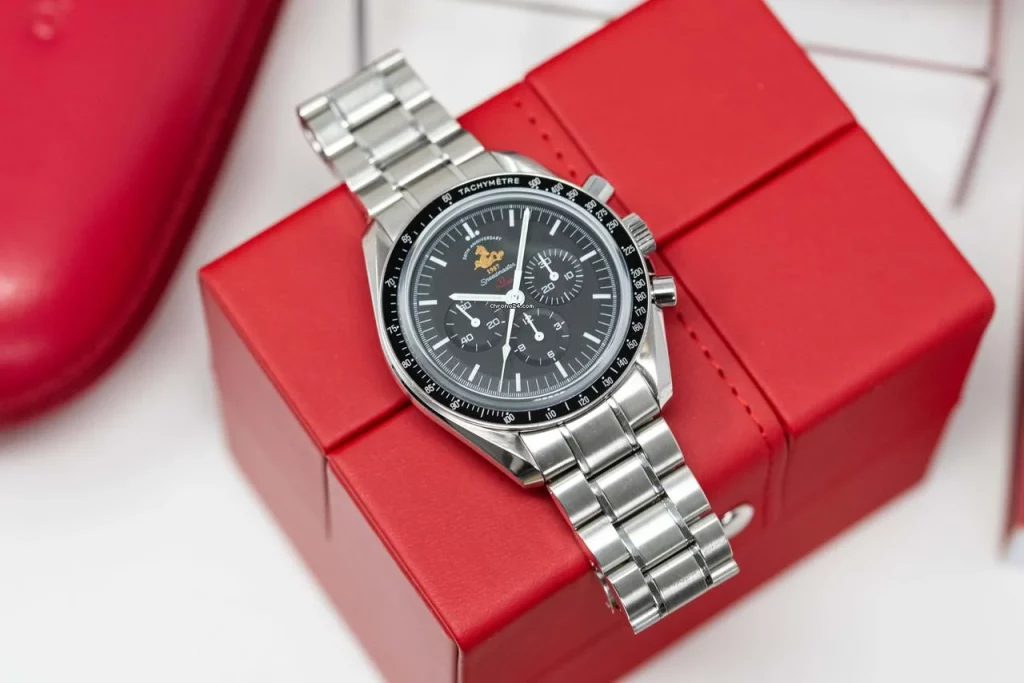
Collecting the Alternative Timeline: The Watches That Almost Made It
The revelation of Longines’ near-selection has breathed new life into a niche corner of the vintage market: space-era Longines chronographs. Collectors now hunt down any surviving examples of the Longines 235T, especially those in condition matching NASA’s specifications—manual-wind movement, black dial, tritium indices, and robust steel case. These watches, while never having traveled to the Moon, now hold a different kind of value: they are relics of the alternate timeline.
Some of the most prized pieces are those accompanied by original paperwork or shipping invoices to U.S. government facilities dated between 1963 and 1965. Even more elusive are those attached to NASA’s own “correction memos”—internal documents that show the scratched-out name of Longines and the overwritten Omega designation. A handful of these memos survive in private collections, having been discarded during post-Apollo cleanups and later salvaged by watch historians and engineers.
One such example surfaced at a German auction house in 2023: a 235T with a damaged tritium dial and a scanned copy of the NASA correction memo. It sold for €198,000—nearly twenty times its estimated pre-sale value. Another surfaced at a Geneva dealer’s shop, hidden among mid-century chronographs and now marketed as the “Moonwatch That Missed.”
Ironically, Omega’s own vintage Speedmasters have benefited from this renewed scrutiny. Auction prices for pre-Apollo references, particularly those with DON bezels and 321 movements, have surged again, as collectors seek models closest to the “original error” moment. The mythology has deepened, not weakened, as fact and fiction collide to shape a richer narrative.
Legacy Reframed: Mistake or Masterpiece?
So, is Omega’s Moonwatch legacy built on a NASA mistake? The answer is nuanced. Yes, the selection process was flawed—rushed, inconsistent, and prone to bureaucratic quirks. But the Speedmaster did prove its worth. It survived tests that destroyed other contenders. It accompanied men into the most hostile environments ever encountered by humanity. It became the silent co-pilot in moments of triumph and tragedy—from lunar footsteps to Apollo 13’s harrowing return.
Longines might have been the original choice. But Omega became the definitive one.
In the end, the story reflects something essential about how history is shaped—not by cold logic or unshakable truth, but by accidents, opportunities, and how stories are told. Omega seized its moment and made it mythic. Longines faded quietly, but for collectors and historians willing to look beyond the official narrative, the alternate lunar legacy remains alive, ticking, and full of mystery.



